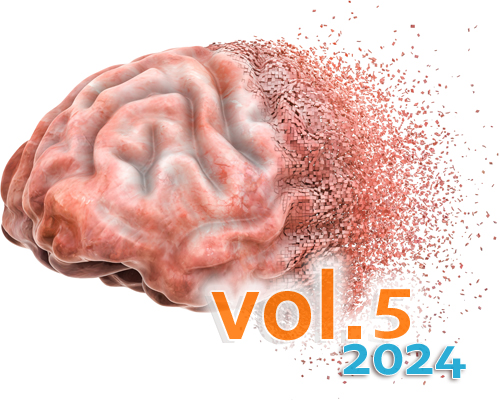Mesial temporal lobe epilepsy and hippocampal sclerosis associated with BRAFV600E mutant neurons in the Cornu Ammonis: an uncertain pathogenesis and a diagnostic challenge
DOI:
https://doi.org/10.17879/freeneuropathology-2024-5269Keywords:
Hippocampal sclerosis, Epilepsy, BRAF, FANCL, CD34, MTLE, Brain tumorAbstract
Mesial temporal lobe epilepsy (MTLE) is a common cause of seizures, and hippocampal sclerosis (HS) is the predominant subtype. BRAFV600E mutations in MTLE-HS have only been reported infrequently. Herein, we illustrate the neurologic, radiological, and histopathological details of a patient with MTLE-HS and BRAFV600E mutant neurons. A 31-year-old male with medically refractory epilepsy presented with magnetic resonance imaging (MRI) and electroencephalography (EEG) findings typical of mesial temporal sclerosis without a mass lesion. The surgical specimens showed ILAE Type 1 HS with neurons immunopositive for BRAFV600E mutant protein distributed along the Cornu Ammonis (CA) curvature. Instead of the normal mostly perpendicular orientation of pyramidal neurons relative to the hippocampal surface, the BRAF mutant neurons were often oriented in a parallel manner. On CD34 immunostaining, sparse clusters or nodules of CD34+ stellate cells and single immunopositive stellate cells were identified. BRAFV600E or CD34 immunopositive cells were less than 1 % of total cells. The patient responded well to surgery with no further seizures after 2 years and occasional auras. Hippocampal BRAF mutant non-expansive lesion (HBNL) has been used to describe such lesions with preserved cytoarchitecture and without overt tumor mass. Others may argue for the dual pathology of HS with early ganglioglioma. Whether pre-neoplastic lesions or early tumors, these cases are important for understanding early glioneuronal tumorigenesis and suggest that BRAFV600E studies should be routinely performed on MTLE-HS cases in the setting of clinical trials. With next-generation sequencing, a FANCL deletion was detected in almost half of the alleles in our case, suggesting that many of the histologically normal-appearing cells of the hippocampus contain this alteration. FANCL mutations can result in cytogenetic anomalies and defective DNA repair and therefore may underlie the development of a low frequency BRAF alteration.
Metrics
Additional Files
Published
How to Cite
Issue
Section
License
Copyright (c) 2024 Samir Alsalek, Alexander S. Himstead, Scott Self, Gianna M. Fote, Sumeet Vadera, Edwin S. Monuki, Mari Perez-Rosendahl, William H. Yong

This work is licensed under a Creative Commons Attribution 4.0 International License.
Papers are published open access under the Creative Commons BY 4.0 license. This license lets others distribute, remix, adapt, and build upon your work, even commercially, as long as they credit you for the original creation. Data included in the article are made available under the CC0 1.0 Public Domain Dedication waiver, unless otherwise stated, meaning that all copyrights are waived.



















